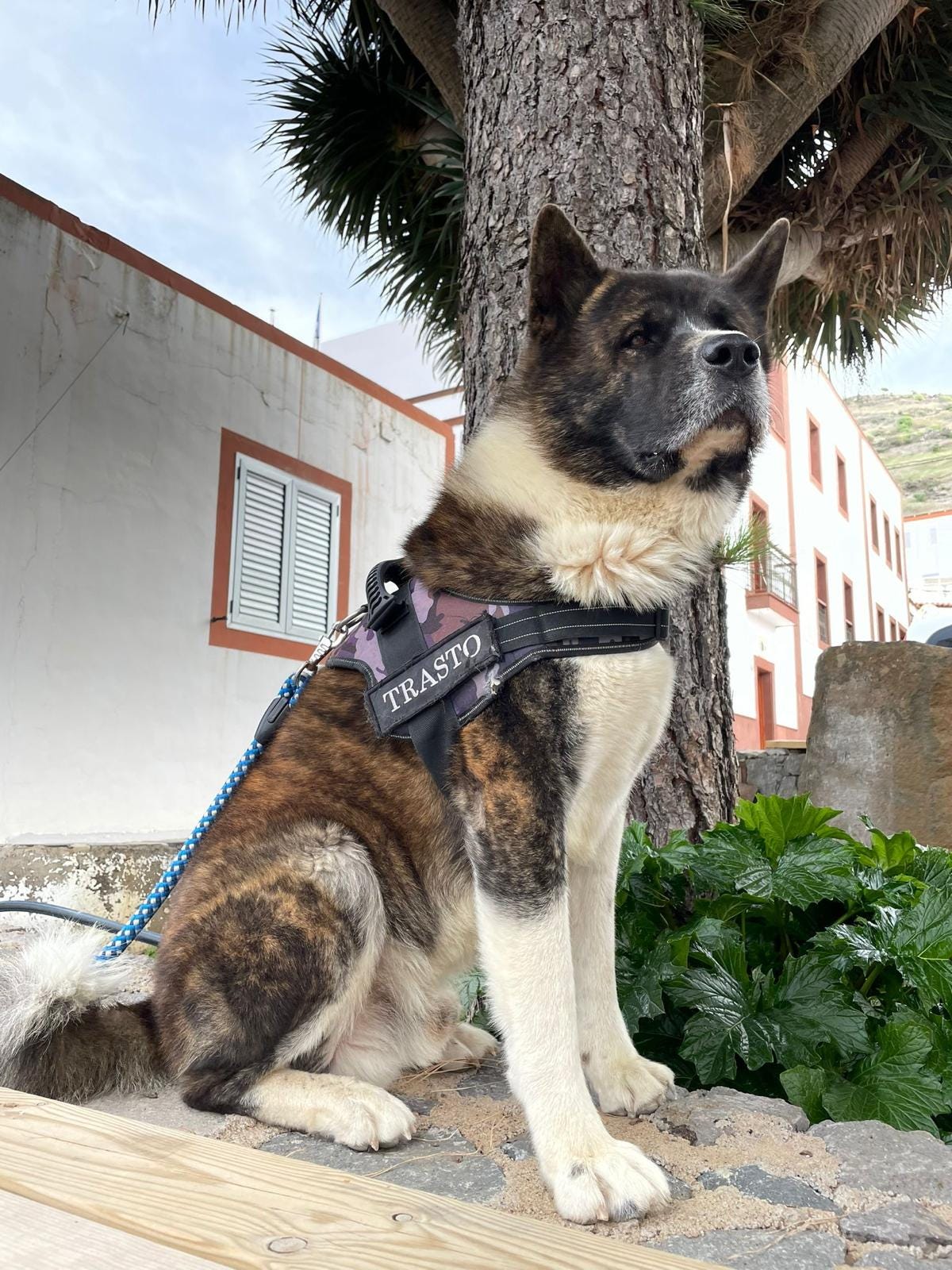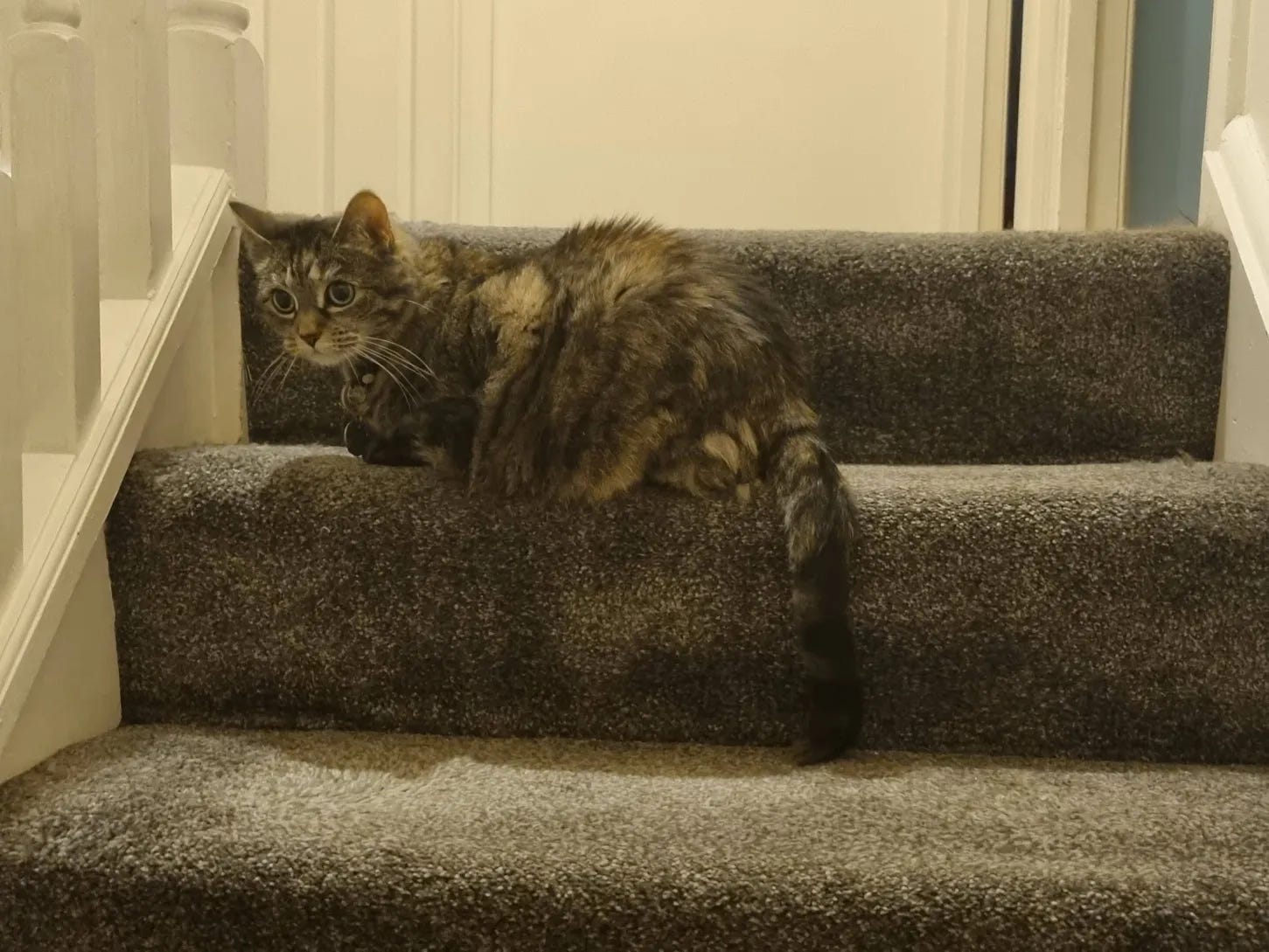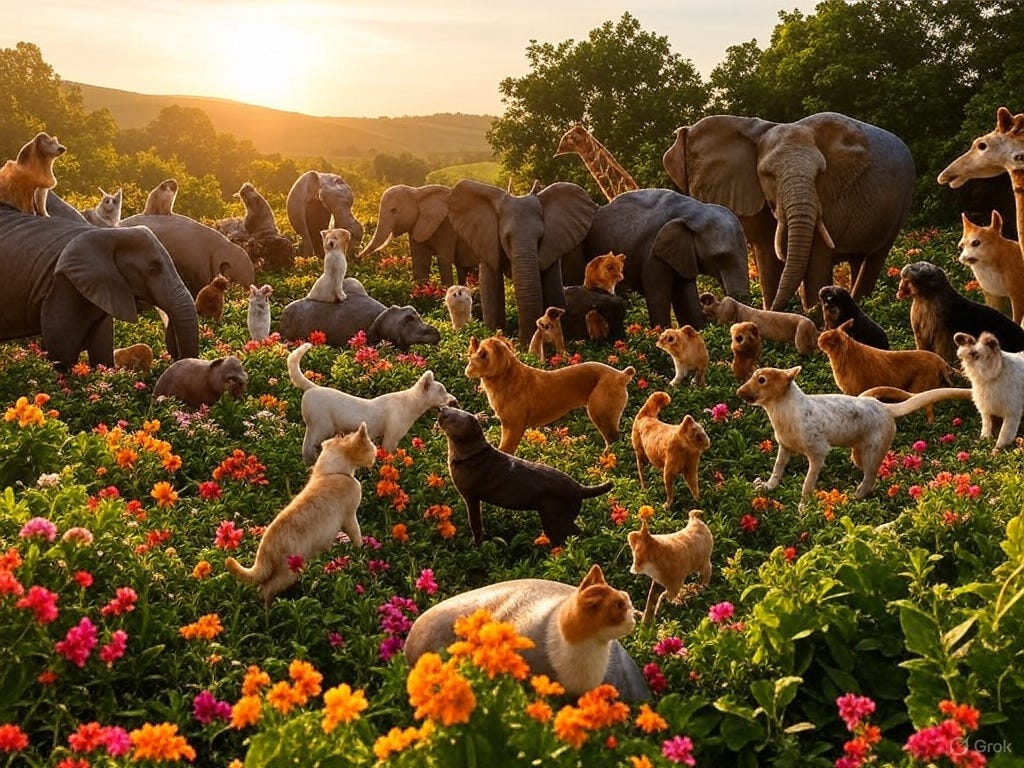TecC 11 - Compelling Companions or Cohabiting Collaborators?
Beyond our tools: a tale of our partners in progress
So far in this series, we have looked at some of the earliest human innovations, our deviations from the pristine state of affairs found in nature, as part of understanding what makes us, humans as a species, different. But this story cannot be told without talking about our non-human friends, because they too are an integral part of the human story.
When we normally use the term ‘technology’, even before the much broader sense I have given to it in this technocentric journey, we almost invariably connote the adaptation of materials in our environment - wood, metal, silicon, whatever - in fashioning the tools that make up its definition. However, we have also ‘modified’ living creatures, unwittingly or intentionally, and this would need to be included in our story if our broader perspective of technological development is to be complete.
In for a Treat
Let’s go back to the Stone Age to a period before the more settled living patterns that emerged with farming that we discussed in the previous episode, where the human species still lived a hunter-gatherer life, which involved hunting and cooking meat using fire and the use of makeshift dwellings.
It’s late afternoon and Steve (our Stone-Age friend from earlier episodes, remember him?) is munching on a particularly juicy piece of meat, a succulent chunk of freshly-fire-seared game, and taking it easy. He spots from the corner of his eye a wolf looking at him, clearly sampling the aroma of the cooked meat next to him, looking rather desirous of partaking of it. Steve being the friendly chap he is, throws a piece of the meat and the wolf comes along and laps it up! And then it happens again a few days later.
By now, both Steve and Wolfie recognize each other. And this particular member of its species, somewhat in exception to the typical trend, is friendlier, and indeed grateful, let’s say, to Steve for his own friendliness in throwing it bits of juicy cooked meat, for Wolfie knows not how to use fire and cook meat for itself. Thus was born a new friendship, for Wolfie would in its friendly gratitude and affection become Doggie!
Well, ok, this is not an Aesop’s tale! But that’s roughly what happened in essence. Man’s best friend, as the dog’s been known, has been traced to genetically descend from wolves,1 and having befriended humans, gradually over generations, lost or diminished much of the wild traits we still associate with wolves.
A Dog’s Life?
This transformation was part of what turned out to be a mutually beneficial association. The wolf-turning-dog got to benefit from living near and then within human habitats and the humans benefited from certain useful traits the animal offered in exchange, not least, in this example, companionship, with those newly developed oh-so-cute puppy eyes!
No, it’s true! There have been actual genetic studies carried out that demonstrate how the eyes of wolves have a morphology2 that comes across as stern to us whereas as the species got tamed, it developed bigger, softer-looking, please-can-I-have-a-piece-of-what-you’re-eating eyes! I mean what sort of people wouldn’t give in to that look and give up their own food?! Answer.3
Similarly as this evolution progressed, dogs have been observed to have developed floppy ears - another phenomenon that’s been experimented with in recent times4 and examined for precise genetic causes but with no conclusive answers found.
Of Home and Hearth
Let’s take a step back and generalize this a bit. Domesticated species, it’s not hard to imagine, developed or exaggerated friendlier, milder traits, dropping or diminishing the ‘wild’ ones, what we also call ‘feral’.5 This would have been invariably accelerated by selection - humans preferring those individuals in the species exhibiting such behavior relative to other individuals, initially without being too deliberate about it but eventually more consciously providing for the interbreeding of such docile individuals to further corroborate such traits in the offspring. Apart from developing milder traits, many such domesticated species are said to have retained juvenile features into adulthood, a phenomenon termed neoteny.6
So that being the very simplest gist of the general story of domestication, let’s also look at the word itself: ‘domestication’ derives from the word for house, which via Latin also gives us ‘dominus’ “master” and ‘dominate’ “to master”, among many more. The Anglo-Saxon derived cognate7 is ‘tame’, which sounds obvious once mentioned. So, in a literal sense, domestication can be seen as the process of bringing a wild animal into the home, making it feel at home! Of course, we don’t think twice about this with regard to some of our domesticated animals, but it didn’t happen overnight!
When your guests invite themselves
By now I’m starting to feel the overwhelming force of furious indignation from all the cat-people out there! How dare you get this far in an article about cute animals, sing paeans to the dog and not even get to talking cats?!! Well, yes, I’m sorry! Er, my excuse is: I was only going chronological!8
Cats have a somewhat unique pathway to domestication - they were not consciously tamed by humans, instead cats themselves adapted themselves to human environments over thousands of years, being independent then as now - now, would that surprise anyone who’s got a cat?! Much evidence of this process is found to have occurred initially around the Fertile Crescent region, including archaeological evidence in Cyprus, and so it’s not a surprise that we associate ancient Egyptians with many cat stories and lore.
And it’s not just with the Egyptians or other ancients that we associate their lore. There is so much that can be said of cats, those self-domesticated, aloof companions, who just about deigned to grace human settlements with their presence primarily as mousers and vermin-controllers, maintaining their independence while entering a mutually beneficial arrangement on their own unflinchingly feline terms. Dogs may be doted on for their docility, content to stay on leash and be walked only by the master; dogs may respond to the ringing bell of food in prime Pavlovian predictability; dogs may ‘sit’, ‘stay’ and ‘roll over’ ever-so-eager to please but… cats go their own way!
Of Motives and Means
Let’s now look at other animals and other motivations for domestication. One of the most important motivations was, of course, food. Some of the animals we know as sources of meat today were originally wild and hunted: sheep, goats, pigs and cattle being the most notable ones, and only later became part of the domestic setup. Chickens and other fowl come significantly later, and were not part of the hunting story! Furthermore, we’ll come back to the story of milk and eggs in a later episode!
Another vital function of domesticated animals has been work. Until the advent of the Industrial Revolution, which we have briefly chronicled in TecC 06 - The First Great Acceleration: The Birth of Industry, animal muscle was a key augmentation of human muscle in a wide variety of back-breaking work, an important example of recruits dragged in being some of the bovids - cattle, oxen, buffalo and bison, which have been drafted in the farms and for other domestic uses.
And on this point, it’s worth emphasizing, something we are already implicitly aware of, that the beasts of burden, the sweaty toilers of the field, the hardy pullers of the plow have, for good or bad, played a significant role in the march of technology, until the breakthrough to replace muscle power once and for all with better means, with the birth of industry.
With all that said, we still haven’t even mentioned that supreme and most spectacular example of domestication, yes, the horse, which shall get its own special episode, so spur on!
Canis Lupus - ‘lupus’ being the Latin word for “wolf” and ‘canis’ for “dog” - loopy or canny Linnaeus naming?!
A cleverer-sounding word for ‘shape’, so the researcher could ensure successful academic paper review
The cat-people, of course!
That is to say, in the 1900s, which is recent compared to 20,000 years ago!
Not all animals were amenable to the process of domestication though. As we know, despite some rare examples, most other animal remain in their wild, untamed state
I should mention that as part of the development of agriculture, which we covered in the last episode, even plant species underwent genetic changes, but in their case, in favor of greater edibility: texture, nutrition and of course taste!
A cognate is a word that has the same origin as a given word inherited from a common parent language, with or without the same meaning. For example, Sanskrit ‘bhrā́tṛ’, Latin ‘frātēr’ and Slavic ‘bràtǔ’ are all cognates of the English ‘brother’, all descended, among many others, from Proto-Indo-European ‘*bʰréh₂tēr’
Which is not true, there were other species domesticated in between, but hey, never offend cat-lovers!







Do you remember seeing that video on YouTube (more than a year old now) where they train a monkey to play a video game just by using its thoughts? Where the incentive mechanism is banana juice fed through a small pipe each time it does a good move. I remember someone commenting something like ‘The monkey’s thinking, there, I’ve fooled these humans into thinking they’ve tricked me’. Sometimes I feel something like that about domestication - where it’s in fact animals like dogs and cats that have tamed us and not the other way around!
What did you like, or not like, about this article, folks?